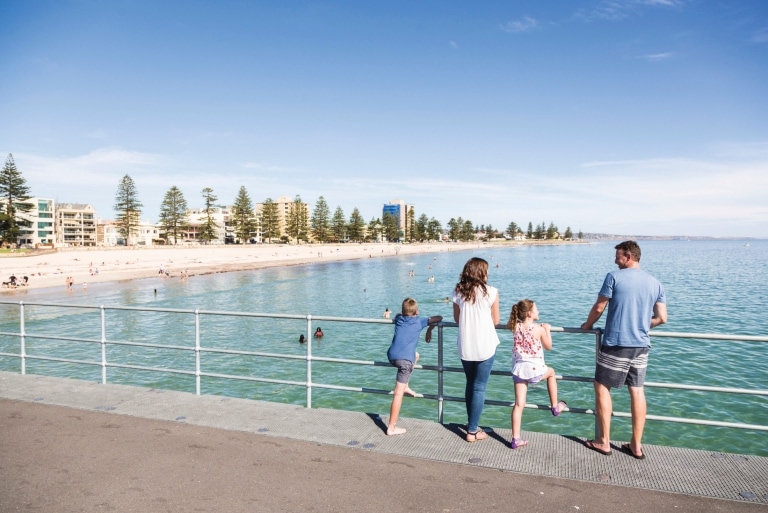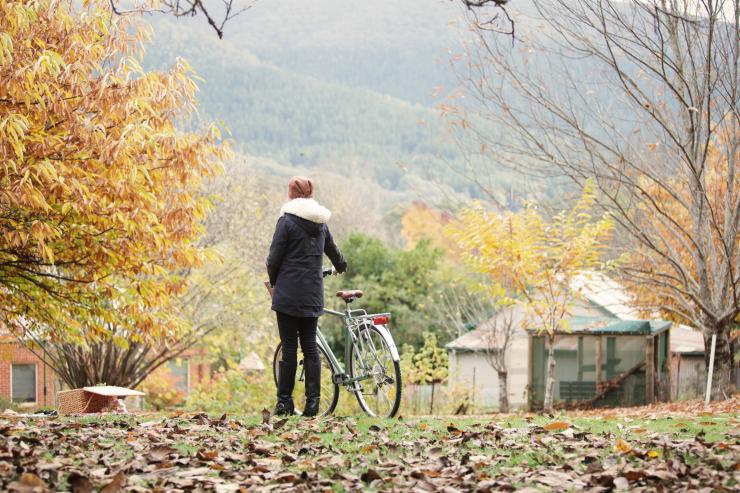Daylight saving begins at 2am, Central Standard Time, on the first Sunday in October and ends at 3am Central Daylight Saving Time on the first Sunday in April. During this time Adelaide moves to Australian Central Daylight Time (ACDT), UTC +10.5.

Weather in Adelaide
Find information on temperature, rainfall and seasonal activities to help you plan your holiday in Adelaide.
What can you expect from Adelaide weather?
Adelaide experiences mild winters and a warm, dry summer. It has an average maximum temperature of 29°C (84.2°F) in summer and 15 - 16°C (59 - 60.8°F) in winter. Plan ahead with our information on temperature and rainfall.
Summer (December – February)
During summer (one of the best times to visit Australia), average temperatures range from 16.7 - 28.6°C (62 - 83.5°F) and rainfall is sparse. Occasionally temperatures can soar to 40°C (104°F). Adelaide enjoys the lowest humidity of any Australian city.
Autumn (March – May)
In autumn, the weather is pleasant with average temperatures between 12.7 - 22.7°C (55 - 73°F) and very little rainfall. The city and countryside take on a red, orange and golden hue.
Winter (June – August)
In winter, average temperatures drop to between 8 - 16°C (46.5 - 60.8°F), and frosts are common in the nearby Adelaide Hills. June is the wettest month, averaging around 80 mm (3.1 inches), however Adelaide is the driest of all the Australian capitals.
Spring (September – November)
Spring sees weather warm up with average temperatures between 11.8 - 22°C (53.2 - 71.6°F). Rainfall is low but evenings can be quite brisk as temperatures drop quickly.
Frequently asked questions about the weather in Adelaide
Seasonal weather in Adelaide
SUMMER
| Weather Categories | Dec | Jan | Feb |
|---|---|---|---|
| 26.8 80 | 28.5 83 | 28.5 83 | |
| 15.1 59 | 16.5 62 | 16.8 62 | |
| 26 | 20 | 21 | |
| 6 | 4 | 4 |
AUTUMN
| Weather Categories | Mar | Apr | May |
|---|---|---|---|
| 26 79 | 22.1 72 | 18.6 65 | |
| 15.2 59 | 12.7 55 | 10.4 51 | |
| 24 | 44 | 68 | |
| 6 | 9 | 13 |
WINTER
| Weather Categories | Jun | Jul | Aug |
|---|---|---|---|
| 15.8 60 | 14.9 59 | 16.1 61 | |
| 8.5 47 | 7.5 46 | 8 46 | |
| 72 | 67 | 62 | |
| 15 | 16 | 16 |
SPRING
| Weather Categories | Sep | Oct | Nov |
|---|---|---|---|
| 18.4 65 | 21.3 70 | 24.4 76 | |
| 9.2 49 | 11.1 52 | 13.1 56 | |
| 51 | 45 | 31 | |
| 13 | 11 | 8 |


































































































































